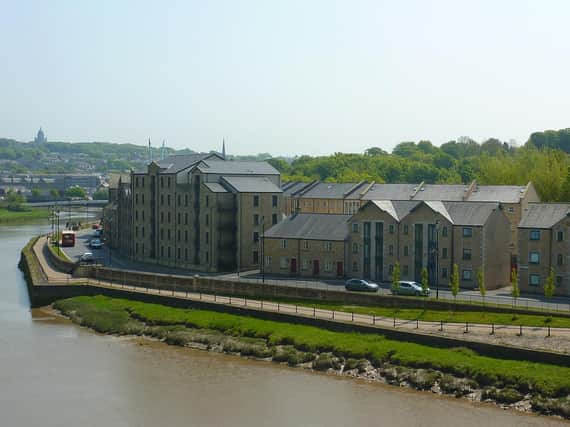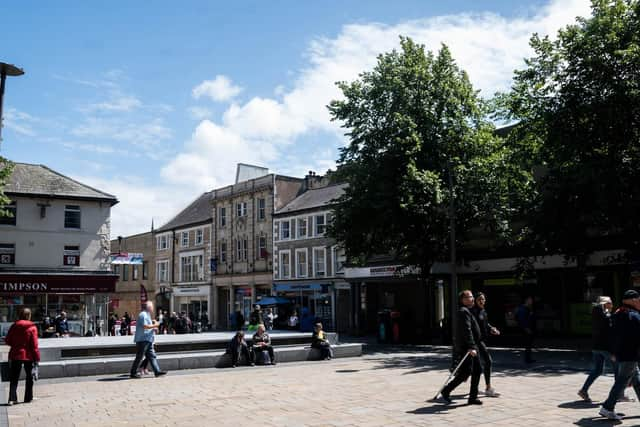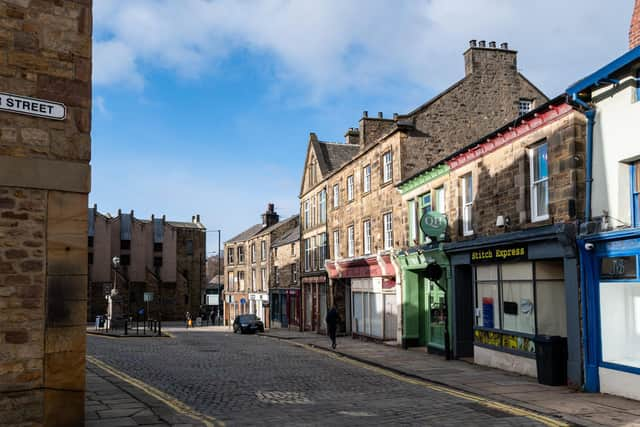Lancaster City Council leader unveils main development plans for 2021 and beyond


The summer holidays are with us but there are plenty of council and political developments to consider once meetings are back in full force.
Coun Caroline Jackson, leader of Lancaster City Council, shared some thoughts this week with the Local Democracy Reporting Service.
Advertisement
Hide AdAdvertisement
Hide AdA Green Party councillor, Coun Jackson said environmental considerations such as saving energy, cutting energy consumption and reducing carbon emmissions are being applied to the upgrade of homes at the Mainway estate.


She said: “The homes at Mainway were built in the 1960s and include a lot of concrete in the construction. We are looking at whether to refurbish or rebuild, and achieving higher standards of energy and carbon efficiency. This includes looking at the possibiity of achieving ‘Passive House’ standards.”
Passive House standards stem from the German Passivhaus Institute. They set-out international construction and design standards for highly energy efficient buildings.
Homes are designed take in more energy, such as solar energy, than they lose. This is achieved through construction, design and fittings such as solar panels, triple glazed windows, roof, wall and floor insulation, and ventilation systems to control warm and cool air.
Advertisement
Hide AdAdvertisement
Hide AdDifferent standards of energy-efficiency can be reached. Some apply to the refurbishment of older buildings where the highest standards cannot be reached but good improvements can still be made.


Ultimate benefits should include reduced energy bills for households, reduced energy consumption and heat loss, and reduced emissions or other environmental impact.
In Lancaster, Mainway residents have taken part in consultation talks in recent months with the council and Lancaster University’s Beyond Imagination research group.
Talks have looked at a range of considerations including economic, social and environmental issues. Detailed plans are to be drawn up including building design and tenant management proposals.
Advertisement
Hide AdAdvertisement
Hide AdThe city council’s cabinet agreed to further development of the proposals this spring. The Mainway upgrade scheme is described as the council’s largest housing and capital project.
Another important area of development is Lancaster’s Canal Quarter, which is subject to new regeneration plans to reflect changing retail and ecomomic trends.
Coun Jackson said: “In the past, there were ideas for the Canal Corridor North area for retail developments. But the retail sector has changed and is less able to thrive. So we are looking at different options now.
"There may be a smaller element of local retail included in the new Canal Quarter scheme if it fits into our overall plans for the area. It’s more likely that there will be some form of attraction there. The area is also good for residential development.”
Advertisement
Hide AdAdvertisement
Hide AdRedevelopment of the Canal Quarter, previously known as Canal Corridor North, has been subject to a number of blueprints and changes over the past ten years or so. The 16-acre site includes council and privately-owned land, some of which is used for car parking and some of which is derelict.
Changes to shopping and leisure activities, redevelopment agreements and development partners have all been part of the mix.
There is also a desire to protect existing shopping streets, improve links across the city centre, increase Lancaster University’s presence within the city centre, and regionally, to develop Lancaster as the north west’s main cultural centre outside Manchester and Liverpool.
In 2009, a proposed redevelopment for the canal area was refused planning permission after a public inquiry, Concerns at the time focused on the potential impact of developments on the area’s historic assets.
Advertisement
Hide AdAdvertisement
Hide AdIn 2010, an agreement with a previous development company , the city council and English Heritage, which is now called Historic England, led to the commissioning of an independent report into the area, which is roughly framed by Moor Lane and St Leonardgate.
The report recognised how the area’s buidlings and acivities had changed over the centuries as Lancaster grew.
It said some significant archeological remains may be found there and the area included nationally-significant buildings including two theatres, the Tramway buildings and the Brewery Malthouse. Identifying and understanding local buildings would be important for new proposals, the reported suggested.
Plans for a retail-led scheme under a previous agreement were ended in 2018.
Advertisement
Hide AdAdvertisement
Hide AdMore recently, Lancaster City Council created a strategic regeneration framework for the district and then put out a tender for a masterplanner to draw-up new detailed proposals.
Artist impressions released by consultants Avison Young and Planit IE showed various locations, including new courtyard spaces and small public squares. A a public consulation was held on the ideas this spring and more updates are due to follow.
On a countywide scale, Coun Jackson raised the potential for new English devolution deals ,where neighbouring district councils within a county can work more closely across traditional boundaries. They may gain extended powers similar to the new metro mayors such as Greater Manchester’s Andy Burnham.
In Lancashire, this could mean district councils including Lancaster working together with other Lancashire districts and unitary authorties, such as Blackpool or Blackburn with Darwen, on cross-boundary projects without the need to create a new elected mayor or a combined authority.
Advertisement
Hide AdAdvertisement
Hide AdShe said: “The Government is looking for new ways of working which cross boundaries between different authorities and organisations. For example with retro-fit (building and construction) projects, we don’t have the power to work with local colleges because they are outside our jurisdiction.
"So the Government might give extra powers to counties, a bit like the metro mayors’ powers without having a metro mayor. The issue of new mayors has been a sticking point.
“All district councils have been involved in looking at the options. We are all going to be collaborating on this together. I’ll he pushing the carbon reduction agenda and areas such as transport. Hopefully the green agenda will become wider.”